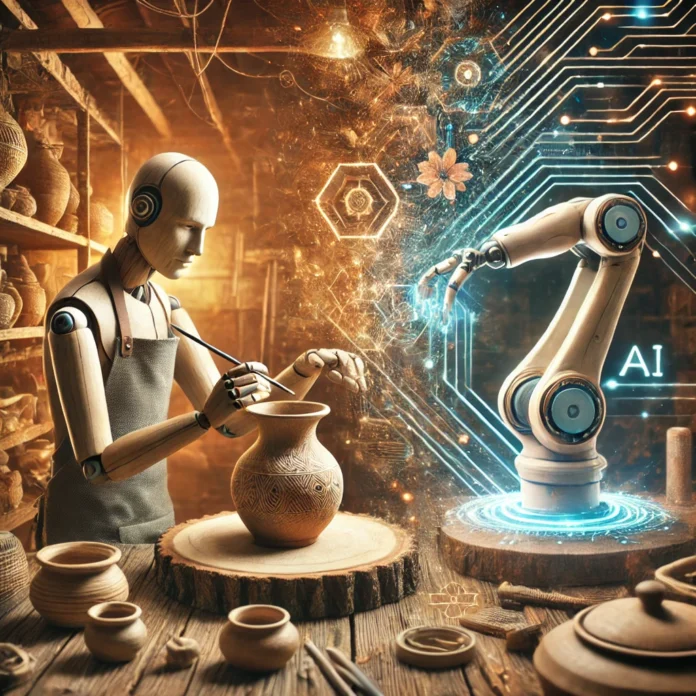Traditional craftsmanship, a vital part of cultural heritage, has been passed down through generations, embodying the skills, creativity, and identity of communities worldwide. However, as Artificial Intelligence (AI) integrates into the creative landscape, its influence on traditional crafts is becoming increasingly evident. AI is not only reshaping how crafts are designed and produced but also raising questions about authenticity, preservation, and the role of human touch in a rapidly digitized world.
How AI is Influencing Traditional Craftsmanship
AI is making its way into craftsmanship by automating repetitive processes, enhancing creative possibilities, and expanding accessibility.
1. Enhancing Craftsmanship with AI Tools
AI tools assist artisans by streamlining complex tasks. For example:
- Pattern Generation: Machine learning algorithms analyze historical patterns and designs to generate new motifs that maintain the essence of traditional styles. Tools like Runway ML are widely used for creating intricate textile patterns.
- Material Optimization: AI models predict the best materials and techniques for specific crafts, ensuring durability and quality while reducing waste.
2. Scaling Production
AI-driven automation enables the production of crafts at a scale previously unattainable by hand. Automated looms and 3D printers equipped with AI technology replicate traditional designs while allowing mass production to meet modern demand.
Preserving Cultural Heritage with AI
AI is playing a significant role in preserving endangered crafts and documenting their techniques for future generations.
- Digital Archives: AI-powered systems like Google Arts & Culture digitize and catalog crafts, ensuring their preservation even if the original techniques fade.
- Skill Transmission: Virtual reality (VR) and AI simulations are being developed to teach traditional crafts to new artisans, preserving knowledge that might otherwise be lost.
- Language and Symbol Translation: AI deciphers symbols, languages, and instructions found in ancient artifacts, helping researchers understand and revive forgotten techniques.
Challenges and Ethical Concerns
While AI offers opportunities, its integration into craftsmanship raises ethical and practical challenges:
1. Loss of Authenticity
Critics argue that AI-produced crafts lack the emotional connection and imperfections that make traditional craftsmanship unique. A machine might replicate a design, but it cannot imbue it with the cultural and personal narratives of the artisan.
2. Displacement of Artisans
Automation risks displacing skilled artisans by making hand-crafted goods less economically viable. This could lead to the erosion of livelihoods and cultural traditions tied to specific crafts.
3. Intellectual Property Issues
When AI generates new designs based on traditional patterns, questions of ownership arise. Do these creations belong to the community, the artisan, or the developer of the AI tool?
Striking a Balance
The key to integrating AI into traditional craftsmanship lies in striking a balance. AI should act as a complementary tool, enhancing artisans’ creativity and efficiency without overshadowing the human element. Initiatives that prioritize collaboration between technology and traditional skills can help preserve cultural heritage while adapting to modern needs.
Conclusion
AI is transforming traditional craftsmanship, offering tools for innovation and preservation. However, its impact must be carefully managed to ensure that the authenticity, cultural value, and livelihoods associated with traditional crafts are not compromised. By blending the strengths of human creativity with AI’s capabilities, the world can celebrate a future where tradition and technology coexist harmoniously.





